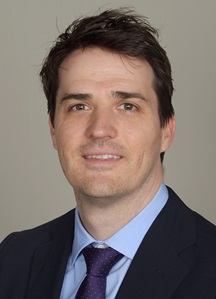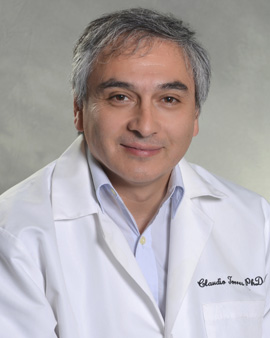Research Findings
Research Results
According to the rules outlined in each grant awarded by The CART Fund, researchers are required to submit regular progress reports on their work. We are pleased to provide the final updates from previous CART Fund grant recipients outlining the results of their research. Please note out of respect for their intellectual and proprietary material, we will only publish final reports rather than the progress reports that have been submitted.
If you have an interest in a particular ongoing research project, please do not hesitate to contact us for additional information.
We are encouraged by these researchers’ continued efforts to provide cutting-edge research data at world-class facilities in the United States thanks to grants from The CART Fund.
 “We are so grateful for the support of CART and the Rotarians,” says Jerold Chun, M.D., Ph. D. of Sanford Burnham Prebys. “They’ve shown over the years that small contributions to Alzheimer’s research can add up to make a huge impact.”
“We are so grateful for the support of CART and the Rotarians,” says Jerold Chun, M.D., Ph. D. of Sanford Burnham Prebys. “They’ve shown over the years that small contributions to Alzheimer’s research can add up to make a huge impact.”
You can read more about Dr. Chun's 2022 grant here.
Dr. Maj-Linda Selenica (Sanders Brown Center on Aging, Univ of Kentucky)
 Alzheimer's disease (AD) is a progressive, devastating form of dementia characterized by gathering of tau protein in the brain of the AD patients. The abnormal accumulation of tau protein inside neurons causes neuronal loss in the brain, leading to the cognitive decline that is symptomatically present in AD patients. Several modifications of tau protein contribute to AD, however current therapeutic strategies targeting tau protein have fallen short in clinical trials.
Alzheimer's disease (AD) is a progressive, devastating form of dementia characterized by gathering of tau protein in the brain of the AD patients. The abnormal accumulation of tau protein inside neurons causes neuronal loss in the brain, leading to the cognitive decline that is symptomatically present in AD patients. Several modifications of tau protein contribute to AD, however current therapeutic strategies targeting tau protein have fallen short in clinical trials.Our laboratory is the first to identify a novel modification of tau, named citrullination, caused by the enzyme called peptidylarginine deiminase 4 (PAD4). We have demonstrated the presence of tau citrullination and induced PAD4 levels in brain tissue from AD patients. Interestingly, using an animal model of tau, we observed reduced ability of citrullinated tau protein to gather in large formations, suggesting that citrullination changes the tau protein structure and properties.
By doing so, we believe that PAD4 and tau citrullination present a novel biological pathway that majorly impacts tau fate and progression in AD. We have undertaken an animal based approach to test the hypothesizes that increased PAD4 levels in the brain will drive tau citrullination and induce small tau species formation, which ultimately worsens neuronal damage and induce neuronal death. We will test whether inducing PAD4 levels in the brain and tau citrullination, will worsen tau pathology in a tau animal model.
The animal model allows us to identify the effects of PAD4 activity on patient relevant end-points such as neuronal degeneration, neuroinflammation and behavior deficits. Major strengths of our study are the use of unique and newly generated antibodies against citrullinated tau, which allow us to investigate PAD4 induced citrullination as a crucial player in tau fate. These studies provide an unparalleled opportunity to break new grounds in AD research for the development of novel therapeutics against citrullinated tau and PAD4.
Dr. Levi Wood (Georgia Institute of Technology)
 Alzheimer’s disease afflicts the health of neurons and the ability of the immune system to clear plaques from the brain. Thus, successful treatment strategies will be needed to simultaneously treat both the neurons and the brain’s immune system. Researchers at Georgia Tech have come up with an idea to address both of these needs simultaneously and non-invasively. Their treatment approach consists of non-invasively exposing the eyes and ears to flickering lights and sounds to stimulate distinct groups of genes that promote neuronal health or the brain’s immune system. In the current study, the investigators are building a map of the genes stimulated by different frequencies and durations of stimulation.
Alzheimer’s disease afflicts the health of neurons and the ability of the immune system to clear plaques from the brain. Thus, successful treatment strategies will be needed to simultaneously treat both the neurons and the brain’s immune system. Researchers at Georgia Tech have come up with an idea to address both of these needs simultaneously and non-invasively. Their treatment approach consists of non-invasively exposing the eyes and ears to flickering lights and sounds to stimulate distinct groups of genes that promote neuronal health or the brain’s immune system. In the current study, the investigators are building a map of the genes stimulated by different frequencies and durations of stimulation.To do so, the investigators have exposed more than 100 healthy and Alzheimer’s mice to audio/visual flicker and measured approximately 20,000 genes in each of their brains in response to different frequencies of flicker for durations from 30min-4hr. The team has discovered that each of these treatments yields different effects on genes involved in neuron health and brain immunity. They have found that multiple frequencies can stimulate genes promoting neural function, whereas different frequencies (20 vs 40Hz) have distinct effects on immune genes.
These findings suggest there may be optimal treatment strategies that promote both healthy neuron and immune function. The investigators are currently revising their analysis for publication. They envision that their stimulation-to-gene expression map will form the foundation of a transformative new way to treat Alzheimer’s disease.
Dr. Mark Albers (Massachusetts Institute of Degenerative Disease)
 Alzheimer’s disease is growing at alarming rates as our population ages; yet there are no disease modifying therapies available to date. Repositioning FDA approved drugs offers an accelerated path to test drugs in AD patients since the safety profile for these drugs has been established. We and others have documented activation of innate inflammation in autopsied brains of patients with Alzheimer’s disease (AD), but the triggers of inflammation remain elusive.
Alzheimer’s disease is growing at alarming rates as our population ages; yet there are no disease modifying therapies available to date. Repositioning FDA approved drugs offers an accelerated path to test drugs in AD patients since the safety profile for these drugs has been established. We and others have documented activation of innate inflammation in autopsied brains of patients with Alzheimer’s disease (AD), but the triggers of inflammation remain elusive.Recently, we discovered a root cause of inflammation in about half of AD patients. A certain class of FDA-approved drugs for inflammatory disorders may interfere with this type of brain inflammation. Based on these exciting results, CART funding is helping us to shed further light on the connections between this inflammatory trigger in the brain cells of patients with AD and the complex inflammatory responses in these brains. Through this work, we are gaining a better understanding of how neurons die in response to this inflammation.
Read More
Dr. Michael Kahn (Beckman Research Institute, City of Hope)
 Adult stem cells (ASC) live with us our entire lives and are responsible for the maintenance and repair of our bodies. With aging, there is a significant deterioration in the function of ASC, leading to reduced and/or defective ability for maintenance and repair. For the past 20 years, the Kahn Lab research focus has been to investigate the potential to pharmacologically manipulate our ASC populations to “rejuvenate” them.
Adult stem cells (ASC) live with us our entire lives and are responsible for the maintenance and repair of our bodies. With aging, there is a significant deterioration in the function of ASC, leading to reduced and/or defective ability for maintenance and repair. For the past 20 years, the Kahn Lab research focus has been to investigate the potential to pharmacologically manipulate our ASC populations to “rejuvenate” them.
The brain’s ability to adapt and reorganize itself by forming new connections is maintained throughout our life. Brain stem cells are a type of ASC which reside in the hippocampus, a region of the brain that is critical in memory formation and also in initiating repair processes in response to insult and injury.
Key features of Alzheimer’s disease (AD), amyloid plaque formation and tau tangles, have been assumed to be the underlying cause of AD. However, it appears likely that these represent independent manifestations of a multi-factorial disease process with a common underlying defect in brain stem cell function.
The Wnt signaling pathway plays an important role in the brain and regulates hippocampal brain stem cell activity. The research funded by CART helped us demonstrate that pharmacologically manipulating Wnt signaling has the potential to ameliorate neurodegeneration and improve memory in aged adults.
Read More
Dr. Carl Wagner (Arizona State University)
 Dr. Carl Wagner was the recipient of a $112,500 grant from The CART Fund in 2018.
Dr. Carl Wagner was the recipient of a $112,500 grant from The CART Fund in 2018. Researchers at ASU continue to make progress in the synthesis and evaluation of new experimental therapeutics targeting a critical protein that impacts Alzheimer’s—apolipoprotein E (apoE)—through a Coins for Alzheimer’s Research Trust (CART) Fund grant. The researchers have recently identified three new drug-like molecules that activate a receptor involved in the synthesis of apoE in human neuronal cells, and they are currently examining whether the apoE protein is produced in greater quantities in the cells treated with these compounds than in untreated cells. The apoE protein is responsible for helping to remove from the brain a substance called amyloid-beta—a protein that is frequently found in plaques in Alzheimer’s patient brains. Identifying new drug compounds that lead to greater levels of functional apoE in human brain cell lines may lead to new Alzheimer’s therapeutics that can reduce levels of amyloid-beta in Alzheimer’s patients.
Dr. Keith Vossel (University of Minnesota)
 People with Alzheimer’s disease often experience seizures and silent seizure activity in the brain, accelerating the memory loss associated with the disease. We know that the tau protein in brain cells is linked to seizures and memory loss in patients with Alzheimer’s, but we do not know exactly how tau contributes to these seizures and ultimately causes cell death in the brain.
People with Alzheimer’s disease often experience seizures and silent seizure activity in the brain, accelerating the memory loss associated with the disease. We know that the tau protein in brain cells is linked to seizures and memory loss in patients with Alzheimer’s, but we do not know exactly how tau contributes to these seizures and ultimately causes cell death in the brain.
With support from The CART Fund, Dr. Vossel’s team has discovered new mechanisms by which tau contributes to epilepsy and memory loss in Alzheimer’s disease. Dr. Vossel’s team has found that by creating modifications in tau’s structure, they can prevent seizures and cell death that occur in Alzheimer’s disease models. They have used advanced molecular imaging to determine that the modifications prevent tau from attaching to molecules that are implicated in both epilepsy and Alzheimer’s disease.
Read More
Dr. Nicola Allen (Salk Institute)
 In their research, the Allen lab has shown that the star-shaped support cells called astrocytes regulate neuronal function throughout life. In the young brain, astrocytes initiate and maintain connections between neurons, while in the aging brain astrocytes may contribute to the loss of neuronal connections and function. Given this close relationship between the two types of brain cells, astrocytes are likely central to development of Alzheimer’s disease (AD).AD is characterized by the loss of neuronal connections, known as synapses, which leads to cognitive decline.
In their research, the Allen lab has shown that the star-shaped support cells called astrocytes regulate neuronal function throughout life. In the young brain, astrocytes initiate and maintain connections between neurons, while in the aging brain astrocytes may contribute to the loss of neuronal connections and function. Given this close relationship between the two types of brain cells, astrocytes are likely central to development of Alzheimer’s disease (AD).AD is characterized by the loss of neuronal connections, known as synapses, which leads to cognitive decline.
The Allen lab aims to better understand the role of astrocytes in AD and test whether targeting astrocytes can be used as a therapy to slow or reverse the loss of synapses. In their CART project, the researchers have used AD mouse models to analyze gene expression in astrocytes to understand the specific changes to astrocytes that accompany synapse loss.
They identified multiple astrocyte genes as being altered in aging, and have now found that some of these genes are also altered in expression at the earliest stages of AD. They are in the process of asking if blocking these gene expression changes in mouse models of AD is protective to synapses.
In a parallel approach the lab is asking if re-expressing signals that astrocytes use to regulate synapses in the young brain, is also protective of synapses in AD. Their findings provide insight into how certain genes could become dysregulated, contributing to synapse loss in AD.
Read More
Dr. Claudio Torres (Drexel University)
Dr. Claudio Torres was the recipient of a $50,000 grant from The CART Fund in 2017.
 Research funded by the Coins for Alzheimer’s Research Trust (CART), a project of the Rotary Clubs of North America, has shown further correlation between cellular aging, or senescence, and Alzheimer’s disease (AD) pathology. The group of Dr. Claudio Torres at Drexel University in Philadelphia, PA analyzed cellular senescence in different cell types in brain regions affected or not affected by AD using post-mortem brain tissue from AD patients and use of antibodies specific to senescence markers to visualize these cells under the microscope.
Research funded by the Coins for Alzheimer’s Research Trust (CART), a project of the Rotary Clubs of North America, has shown further correlation between cellular aging, or senescence, and Alzheimer’s disease (AD) pathology. The group of Dr. Claudio Torres at Drexel University in Philadelphia, PA analyzed cellular senescence in different cell types in brain regions affected or not affected by AD using post-mortem brain tissue from AD patients and use of antibodies specific to senescence markers to visualize these cells under the microscope.
Cellular senescence occurs with age, and results in cells being unable to divide and replenish their population, and also losing some function and being pro-inflammatory. Torres’ group showed that a marker of unresolved DNA damage that is typically used as a marker of senescence, was increased in glia, or helper cells, in a brain region (temporal cortex) affected in intermediate stage of AD, while in another region, the cerebellum, which is not affected by disease, there was no increase in senescence either.
Read More
Dr. Tong Li (Johns Hopkins University)
 Age is the most important risk factor for development of Alzheimer’s disease (AD). How aging increase the chance for people to develop AD is still unclear. To address this critical question, we proposed to use a newly developed mouse model of AD to test whether aging could facilitate the development of a protein aggregation called the tau tangle, which is a key hallmark in the brain of AD patients. We found that when mice were allowed to start accumulation of tau aggregation at 6 month or 12 month of age (mimicking young adult and middle age in humans), the onset and development of tau pathology were not changed.
Age is the most important risk factor for development of Alzheimer’s disease (AD). How aging increase the chance for people to develop AD is still unclear. To address this critical question, we proposed to use a newly developed mouse model of AD to test whether aging could facilitate the development of a protein aggregation called the tau tangle, which is a key hallmark in the brain of AD patients. We found that when mice were allowed to start accumulation of tau aggregation at 6 month or 12 month of age (mimicking young adult and middle age in humans), the onset and development of tau pathology were not changed.However, when tau accumulation in mice were started at 16 month of age (mimicking advanced age in humans), much more severe tau aggregation, neuron cell loss and brain atrophy were observed. These results demonstrated that aging accelerated development of tau aggregations. In addition, we also found that age also play an essential role in the sex differences in AD. Our studies demonstrate that the age could increase the risk of AD by accelerating the development of tau aggregation. Understanding the aging related mechanism in AD will provide new strategies for designing effective treatments for AD.
Dr. Tsuneya Izeku (Boston University)
 We have completed the assessment of selected drugs for targeting an enzyme tau-tubulin kinase 1 (TTBK1) by biochemistry, toxicity to cells, toxicity to animals and efficacy of inhibiting the toxic modification of tau protein in animal brain. After assessment of these data, it was determined that none of the selected drugs are good enough for next step. We performed second screening of modified drugs from the original best candidate drug, but none of them show inhibition activation against target enzyme.
We have completed the assessment of selected drugs for targeting an enzyme tau-tubulin kinase 1 (TTBK1) by biochemistry, toxicity to cells, toxicity to animals and efficacy of inhibiting the toxic modification of tau protein in animal brain. After assessment of these data, it was determined that none of the selected drugs are good enough for next step. We performed second screening of modified drugs from the original best candidate drug, but none of them show inhibition activation against target enzyme.New drug candidates are found based on the screening software for simulation of drug-enzyme interaction. We plan to test those new candidates for its inhibition activity against target enzyme as a backup strategy in the future.
Dr. Michael Karin (University of California San Diego School of Medicine)
 The foundation of our work is the proposal that chronic neuronal inflammation (i.e neuroinflammation) plays a key role in the progression of Alzheimer’s Disease and other types of late onset neurodegenerative diseases. While inflammation is usually associated with pain, fever and swelling, there is evidence that it also plays an important role in neurodegeneration.
The foundation of our work is the proposal that chronic neuronal inflammation (i.e neuroinflammation) plays a key role in the progression of Alzheimer’s Disease and other types of late onset neurodegenerative diseases. While inflammation is usually associated with pain, fever and swelling, there is evidence that it also plays an important role in neurodegeneration.
Accordingly, we hypothesize that damage to the brain’s neurons due to aging and/or trauma results in the release of normal cellular components, such as the energy storing molecule ATP, that can evoke an inflammatory response when encountered by specialized immune cells that reside in the brain called microglia.
When microglia are stimulated by such damage-released molecules, they secrete inflammatory signals called cytokines, which are small proteins through which microglia can affect neuronal functions. IL-1 and IL-18 are two of these cytokines produced by activated microglia and they can amplify the initial damage to neuronal cells and thereby worsen the neuronal loss that eventually gives rise to the dementia and impaired cognitive ability associated with Alzheimer’s disease.
IL-1 and IL-18 are made by a large intracellular complex of proteins called the NLRP3 inflammasome. We have proposed that the most effective way to halt the production of IL-1 and IL-18 by activated microglia, and thereby protect early Alzheimer’s disease patients from progressive neuronal loss, is to inhibit, or shut down, the NLRP3 inflammasome factory. We therefore investigated how the NLRP3 inflammasome factory is powered and identified an important role for the cellular “power stations” called mitochondria.
Mitochondria are organelles (sub-cellular organs) that produce energy for cells. Just like us, mitochondria have their own DNA. We found that the NLRP3 inflammasome and the production of mitochondrial DNA are stimulated at the same time. However, the conditions that stimulate the NLRP3 inflammasome also damage the newly produced mitochondrial DNA. To get rid of their bad DNA and repair the damage, the mitochondria spit out fragments of bad DNA to the cytosol, where they bind to the NLRP3 inflammasome and start the production of IL-1 and IL-18.
Although short-term production of IL-1 and IL-18 is important for tissue repair, their chronic production worsens neuronal damage and accelerates the progression of Alzheimer’s disease. Based on these findings, we suggest that a highly effective way to shut down the NLRP3 inflammasome factory is to prevent the generation of bad mitochondrial DNA. To this end, we identified a critical enzyme that helps produce mitochondrial DNA in microglia and have shown that stopping this enzyme, called CMPK2, prevents the generation of bad mitochondrial DNA, thereby blocking NLRP3 inflammasome activation and production of IL-1 and IL-18.
So, to put all of this in an easier to understand context, the NLRP3 inflammasome can be considered a factory, IL-1 and IL-18 are the products made by the factory and bad mitochondrial DNA and CMPK2 are the control boards that control how fast the factory spits out its products.
Since the initiation of our CART-sponsored project, we have confirmed that exposing microglia to inflammatory signals begins the production of CMPK2. Furthermore, we recently produced mice that are deficient in CMPK2 and are now expanding this line of mice so that we will be able to crossbreed them with a mouse model of Alzheimer’s disease. This will enable us to combine our discoveries and determine if shutting down CMPK2 will be useful for halting the progression of the neuronal degeneration and dementia that characterize Alzheimer’s disease.
Read More
Dr. Philip Copenhaver (Oregon Health & Science University)
 “A Novel Modulator of membrane estrogen receptors for treating AD”
“A Novel Modulator of membrane estrogen receptors for treating AD”
During Alzheimer’s Disease, toxic amyloid proteins accumulated in the brain of patients, but clinical trials designed to reduce amyloid have failed. As an alternative strategy, we have tested a promising compound called STX that might protect patients by supporting the overall health of brain cells. STX was originally developed as a replacement for estrogen (the female sex hormone).
With support from The CART Fund, we have explored the protective mechanisms of STX. We found that STX activates an important signaling cascade inside nerve cells (called “PI3K” signaling), which stimulates protective responses in other diseases.
Like estrogen, STX can prevent the loss of brain cells in an animal model of stroke. However, STX does not cause the side effects of estrogen that can harm AD patients, suggesting that it can be used to treat both men and women. In early studies, we discovered that STX protected isolated nerve cells against toxic amyloid, in part by improving the production of cellular energy in the brain.
In particular, we found activation of PI3K signaling by STX improves mitochondrial function, which generate cellular energy needed to keep nerve cells healthy.
Using CART funds, we also showed that STX can be safely fed to mice for many months (with no side effects). More importantly, treatment with STX improved behavioral responses and memory in a mouse model of AD. The results of our CART project will provide the foundation for a more extensive analysis of STX, with the long-term goal of advancing STX to clinical trials.
Read More
Dr. Christelle Anaclet (University of Massachusetts Medical School)
Dr. Christelle Anaclet was the recipient of a $250,000 grant from The CART Fund in 2017.
 The goal of our work is to develop new mouse models to test the role of sleep in memory, both in healthy individuals and in Alzheimer’s Disease models. Alzheimer’s Disease is associated with both sleep impairment and memory deficit. Two major sleep stages are distinguished, slow-wave-sleep (SWS) and rapid eye movement sleep (REMS).
The goal of our work is to develop new mouse models to test the role of sleep in memory, both in healthy individuals and in Alzheimer’s Disease models. Alzheimer’s Disease is associated with both sleep impairment and memory deficit. Two major sleep stages are distinguished, slow-wave-sleep (SWS) and rapid eye movement sleep (REMS).
Historically, loss-of-sleep experiments have suggested a beneficial role of SWS in declarative memory and a beneficial role of REMS in non-declarative memory, but these experiments have been unable to describe what it is about sleep that might enhance these functions.
We are testing the hypothesis that sleep enhancement can improve memory function and reverse the deficits associated with Alzheimer’s Disease, using – for the first time – gain-of-sleep experiments. We have previously validated a mouse model of SWS enhancement.
The CART grant allowed us to validate a mouse model of REM sleep enhancement, establish cognitive testing in our lab, and produce and validate two triple transgenic mouse models to enhance sleep in Alzheimer’s Disease mice.
Read More
Dr. Chihiro Sato (Washington University School of Medicine)
 Thanks to the generous support from CART, Drs. Sato and Barthelemy published multiple papers describing distinct tau profiles in the human brain, cerebrospinal fluid, and neurons in a dish. Dr. Barthelemy also found that the phosphorylation ratio at position T217 on the tau protein serves as a more sensitive AD biomarker compared to the commonly used T181.
Thanks to the generous support from CART, Drs. Sato and Barthelemy published multiple papers describing distinct tau profiles in the human brain, cerebrospinal fluid, and neurons in a dish. Dr. Barthelemy also found that the phosphorylation ratio at position T217 on the tau protein serves as a more sensitive AD biomarker compared to the commonly used T181.
In their research supported by CART, they developed methods to measure tau, phosphorylated tau (p-tau) and specific isoforms that result from alternative splicing and truncations in the human brain, CSF and cell culture models. They used tau antibodies to capture and concentrate tau proteins in the sample, then used mass spectrometry methods to describe and measure which types of tau (splicing variants, truncations, chemical modifications such as phosphorylation) are present in the brain, CSF and neurons in cell culture.
They found that tau is full-length in the brain, but CSF tau is truncated at the middle of the protein. Neurons derived from human skin fibroblasts using induced pluripotent stem cell (iPSC) technologies were also analyzed. Tau is full-length inside the cells but when it is released in the media, it is truncated, recapitulating tau profiles in the brain and CSF, respectively. This supports that neurons in a dish can serve as a translational model for studying tau in the human central nervous system (Sato, Barthelemy et al., Neuron, 2018).
They further analyzed p-tau profiles in the individuals with AD in the CSF (Barthelemy et al., Front Aging Neurosci, 2019) and brain. In AD CSF and brain, p-tau at specific sites were increased. When brain samples were biochemically analyzed for local correlation between amyloid and p-tau, soluble p-tau was more associated with the amount of local amyloid compared to insoluble p-tau. This suggests a direct link between local amyloid and p-tau in AD brains (Horie, Barthelemy, Sato et al., submitted).
Furthermore, they found that specific peptides in the Microtubule Binding Region (MTBR) of tau that is closer to the end of the protein increase in AD (Horie, Barthelemy, Sato et al., under revision), potentially serving as another CSF biomarker of AD.
Second, they tested whether other CSF p-tau species can serve as more sensitive AD biomarkers compared to the most commonly used phosphorylation site at amino acid Threonine 181. They found that the ratio of phosphorylation at Threonine 217 (pT217) to T217 (phosphorylation occupancy at T217) in the middle of the protein associates with amyloid more strongly than the ratio of pT181 to T181 in late onset sporadic AD (Barthelemy, Sato et al., Alz Res Ther 2020). This led to another study in individuals with familial AD mutations in the Dominantly Inherited Alzheimer’s Network (DIAN) cohort at Washington University. Dr. Barthelemy and the team found that the ratio of pT217 to T217 increases almost 20 years before onset of AD symptoms, right at the time amyloid aggregation starts in the brain as detected by positron emission tomography (PET) imaging (Barthelemy, McDade et al., Nat Med 2020).
Read More
Dr. Thomas Anastasio (University of Illinois)
 Alzheimer Disease (AD) remains the leading neurological killer, and “the amyloid hypothesis” remains the leading theory of AD. “Amyloid-beta” is the abnormal protein fragment that accumulates in AD brains and that composes the “amyloid plaques” that are found in AD brains. The amyloid hypothesis says that amyloid-beta causes AD – but it’s wrong! Treatment strategies aimed at reducing amyloid-beta don’t work!
Alzheimer Disease (AD) remains the leading neurological killer, and “the amyloid hypothesis” remains the leading theory of AD. “Amyloid-beta” is the abnormal protein fragment that accumulates in AD brains and that composes the “amyloid plaques” that are found in AD brains. The amyloid hypothesis says that amyloid-beta causes AD – but it’s wrong! Treatment strategies aimed at reducing amyloid-beta don’t work!
These and other observations show that amyloid-beta is not the only factor that underlies AD. Instead, research shows that AD is “multifactorial” in that it is caused by many different factors, not just amyloid-beta. And because AD is multifactorial, it probably should be treated with combination therapies that target multiple factors. But this poses a problem because the design of combination therapies to treat multifactorial diseases is highly complex. One project funded by the CART foundation addressed this problem.
This computational project proceeded in three stages. The first was to create a computer model of the interactions between many of the key factors that are known to underlie AD. The second was to analyze an extensive database containing data on real AD patients, which also included lists of all the drugs they took. Fortunately, the patients in the database took commonly prescribed drugs in many different combinations, so the third stage was to see if the benefits to the patients of specific combinations of drugs could be correlated with predictions of the efficacies of those same drug combinations from the computer model.
Statistical analysis showed that the database benefits and the predicted model efficacies were significantly correlated! That meant that the computer model was picking up something real about the complex, multifactorial, pathological processes that underlie AD. The main payoff was that the agreement between the database and the model could be used to identify new drug combinations that might actually be effective in treating AD, and they involve commonly used drugs that elderly people already take.
The approach identified many potentially effective combinations, but combinations of certain drugs rose to the top. They included the NSAIDs ibuprofen (and similar drugs) and aspirin, along with drugs that are commonly used to treat high blood pressure. This CART funded project suggests that these combinations should be explored experimentally and/or clinically to see if they really can be effective weapons in the fight against AD.
Read More
Dr. Frank Sharp (University of California at Davis)
 We were the first to propose that lipopolysaccharide (LPS, found in the wall of all Gram-negative bacteria) could play a role in causing sporadic Alzheimer’s disease (AD). This is based in part upon recent studies showing that: Gram-negative E. coli bacteria can form extracellular amyloid; bacterial-encoded 16S rRNA is present in all human brains with over 70% being Gram-negative bacteria; ultrastructural analyses have shown microbes in erythrocytes of AD patients; blood LPS levels in AD patients are 3-fold the levels in control; LPS combined with focal cerebral ischemia and hypoxia produced amyloid-like plaques and myelin injury in adult rat cortex.
We were the first to propose that lipopolysaccharide (LPS, found in the wall of all Gram-negative bacteria) could play a role in causing sporadic Alzheimer’s disease (AD). This is based in part upon recent studies showing that: Gram-negative E. coli bacteria can form extracellular amyloid; bacterial-encoded 16S rRNA is present in all human brains with over 70% being Gram-negative bacteria; ultrastructural analyses have shown microbes in erythrocytes of AD patients; blood LPS levels in AD patients are 3-fold the levels in control; LPS combined with focal cerebral ischemia and hypoxia produced amyloid-like plaques and myelin injury in adult rat cortex.These data led to the hypothesis that LPS acts on leukocyte and microglial TLR4-CD14/TLR2 receptors to produce NFkB mediated increases of cytokines which increase A? levels, damage oligodendrocytes and produce myelin injury found in AD brain. Since A?1-42 is also an agonist for TLR4 receptors, this could produce a vicious cycle that accounts for the relentless progression of AD. Thus, LPS, the TLR4 receptor complex, and Gram-negative bacteria might be treatment or prevention targets for sporadic AD.
Read More
Dr. Yueming Li (Memorial Sloan Kettering Cancer Center, NYC)
 Alzheimer’s disease (AD) is characterized by an aggregation of toxic proteins that build up in the brain. Normally, a process called autophagy allows cells to rid themselves of any “garbage” they hold. We define that garbage as proteins that are unnecessary or dysfunctional components.
Alzheimer’s disease (AD) is characterized by an aggregation of toxic proteins that build up in the brain. Normally, a process called autophagy allows cells to rid themselves of any “garbage” they hold. We define that garbage as proteins that are unnecessary or dysfunctional components.
When people have AD, the autophagy process fails with two specific proteins, toxic amyloid beta plaques and tau tangles. The cells cannot rid themselves of these proteins. In fact, we can see the cumulative toxicity when we examine the brain of a patient with AD who has passed away.
AD is caused by progressive brain cell death over time. We believe that AD, as well as other neurodegenerative disorders, can be treated by addressing breakdown in the cells’ autophagic pathways. If the pathways can return to functioning properly, the cells may able to engage in their own housekeeping and free themselves of the damaging detritus.
My team is looking at ways to clear the autophagic pathways in these cells. Because of advanced technologies, we can use chemical libraries to screen for and identify existing drug molecules that promote the proper function of these cleaning pathways.
With this generous grant, we have identified such molecules. We have also synthesized the molecules because in doing so we can improve their drug properties.
As we move forward, we’re continuing to develop this class of molecules as drug candidates to further understand, and possibly treat, AD. Our progress has brought us closer to our goal of bringing relief to individuals and families living with this difficult and progressive neurological disease.
Read More
Dr. Wenjie Luo (Cornell University)
 Investigating the role of microglia in tau clearance in Alzheimer’s Disease
Investigating the role of microglia in tau clearance in Alzheimer’s Disease
During these three years supported by the CART Fund, we have performed the experiments as proposed in the original plan and obtained extensive knowledge about how microglia degrade pathological tau based on the following scientific results. In our original proposal, we planned to investigate the mechanism how brain phagocytic cell microglia play a role in the brain clearance of tau, a pathologic protein that can spread from neuron to neuron and form deadly neurofibrillary tangles in Alzheimer’s Disease (AD).
The ultimate goal of this research project is to search for therapeutic agents that can enhance the tau-degrading activity of microglia, thus reducing tau pathology and preventing cognitive decline in AD patients. During these funded years, we have made scientific discoveries about the mechanism how pathologic tau is internalized and degraded by microglia. We also identified the activation conditions as well as genetic factors that regulate this tau degradation process in microglia. Finally, we have collected data showing that brain microglia approach pathologic tau injected into the mouse brain (see figure to right).
We deeply appreciate the tremendous help provided by The CART fund to help us initiate and extend this project. The scientific observation and conclusion are significant for the AD basic research and also impact greatly in AD therapeutic study.
Read More
